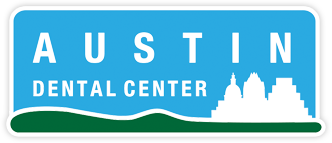Flossing is an extremely important part of dental hygiene. It helps remove the food particles and plaque that is trapped between the teeth in places that the toothbrush is unable to reach. Because of this, flossing assists in the prevention of cavities. A significant part of your child’s dental hygiene should include flossing. However, many parents are not sure when they should start flossing their children’s teeth.
When to Start Flossing Your Child’s Teeth
As soon as your child’s teeth touch one another, it is time to begin flossing, once daily. The teeth touching each other can occur when your child is as young as six months old. This is around the age when his first two bottom teeth will emerge.
The Misconception that Primary Teeth are Not Important, They Just Fall Out
A large number of people believe that because the first ‘baby’ teeth will eventually fall out, they are not as important as the permanent teeth. This is not necessarily true. Until the primary teeth fall out, they play a major role in assisting your child in biting and chewing his food. Not only that, but they also help your child to speak clearly so he is understood by others. Primary teeth are also important because they guide his permanent teeth into place as they emerge.
The Flossing Procedure
1. Using your dental floss of choice, wrap one end of the floss around your right and left hands middle fingers.
2. Use your index fingers and thumbs as a guide for the floss and then gently slide it between two of his teeth. This can be accomplished with a gentle sawing motion.
3. Once you reach the gum line, pull the ends of the floss toward one another to form the shape of a ‘C’ against the tooth.
4. Tighten the floss and then move it up and down on the tooth.
5. Now, do the same procedure with the other tooth next to it, repeating the same motion.
6. Repeat this process for all of his teeth. Always make sure you floss the front and back of each tooth. Do not forget about his back teeth.
By the time your child reaches the age of nine, he should be able to floss on his own. To make flossing younger children’s teeth easier, put them on your lap and have them face you. The technique is identical, no matter who is doing the flossing.
Good Dental Hygiene is an Important Aspect of Your Child’s Health
You can help your child by giving him a good head start. To do this, use the following tips as your guide to maintaining his dental health.
• Routine visits to his pediatric dentist are a necessity.
• Ensure he is receives the proper amount of fluoride to keep his teeth strong.
• Help him brush his teeth two times a day and floss at night, just before bedtime.
• Have him consume a healthy diet full of fruits and vegetables.
How Diet Affects Your Child’s Teeth
What and how often your child eats will affect his teeth. Frequent snacking has the ability to increase your child’s risk for tooth decay. This occurs because cavities may develop while sugar-containing foods are sitting in his mouth for an extended length of time.
The Culprit
The bacteria that reside in our mouths, will feast upon these tiny bits of food that have been left behind. This creates acid. This acid is what destroys the enamel of the teeth. Between snacks and meals, saliva will wash the acid away. However, if your child is constantly eating, the saliva may not have time to wash away this destructive acid, which, in turn, will cause him to have tooth decay.
Sugar
When people think about sugar, white sugar will generally come to mind. White sugar is used in baked goods and candy. It is important to note that all food containing carbohydrates ultimately breaks down into sugar. The bacteria in the mouth do not care whether your child eats a pretzel or a piece of candy.
There are foods that can assist you in maintaining your child’s overall health and heartwarming smile. We have included some examples below.
• Whenever possible, purchase unsweetened or sugar-free foods.
• Eat healthy snacks such as cheese, vegetables and fresh fruit.
• You should always serve starchy or sugary foods at mealtime, as opposed to as a snack. This is important because the majority of children drink fluids during a meal, but not necessarily with a snack. The drinking of the fluid may help wash many of the remaining food particles away.
• Limit the number of snacks he receives daily.
• If your child does snack, have him brush his teeth. If this is not possible, have him rinse his mouth with water a few times.
• Always encourage your child to chew sugar-free or xylitol-sweetened gum.
Avoid the Following Foods, unless Your Child is Brushing Directly After Eating Them
These foods tend to get stuck in the grooves and in between the teeth, making them difficult to remove:
• Dried figs
• Cookies
• Jelly beans
• Granola bars
• Potato chips
• Doughnuts
• Puffed oat cereal
• Pretzels
• Raisins
Following these tips will help keep your child’s beautiful smile shining brightly! The truth is, our teeth are our largest facial feature, keeping them healthy and strong should be top priority.
Drew James works for an Indianapolis pediatric dentist, and when out of the office, enjoys cooking, jogging, and keeping up his raised-bed gardens.









Leave a Reply
You must be logged in to post a comment.